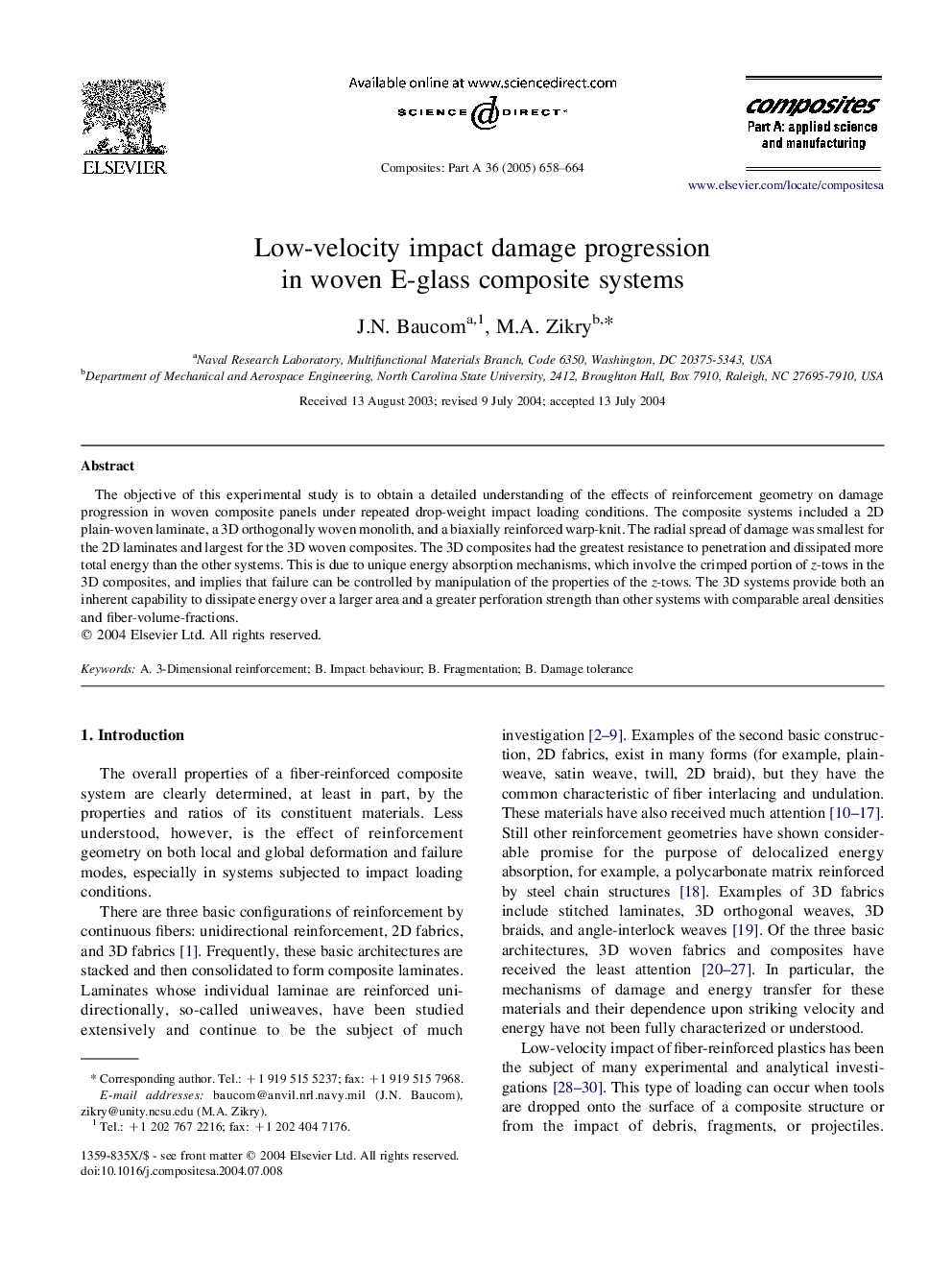| Article ID | Journal | Published Year | Pages | File Type |
|---|---|---|---|---|
| 10628314 | Composites Part A: Applied Science and Manufacturing | 2005 | 7 Pages |
Abstract
The objective of this experimental study is to obtain a detailed understanding of the effects of reinforcement geometry on damage progression in woven composite panels under repeated drop-weight impact loading conditions. The composite systems included a 2D plain-woven laminate, a 3D orthogonally woven monolith, and a biaxially reinforced warp-knit. The radial spread of damage was smallest for the 2D laminates and largest for the 3D woven composites. The 3D composites had the greatest resistance to penetration and dissipated more total energy than the other systems. This is due to unique energy absorption mechanisms, which involve the crimped portion of z-tows in the 3D composites, and implies that failure can be controlled by manipulation of the properties of the z-tows. The 3D systems provide both an inherent capability to dissipate energy over a larger area and a greater perforation strength than other systems with comparable areal densities and fiber-volume-fractions.
Related Topics
Physical Sciences and Engineering
Materials Science
Ceramics and Composites
Authors
J.N. Baucom, M.A. Zikry,
